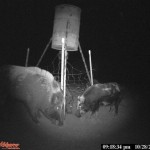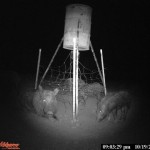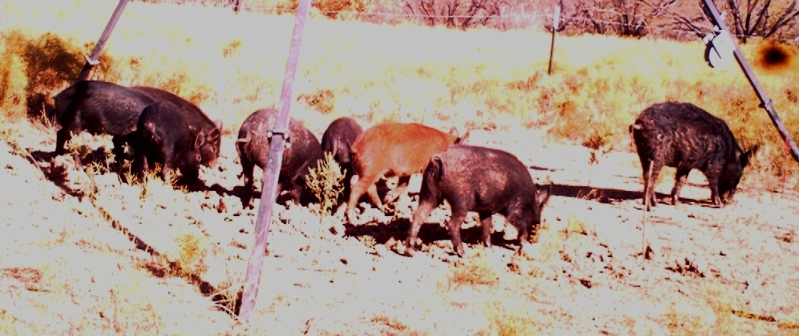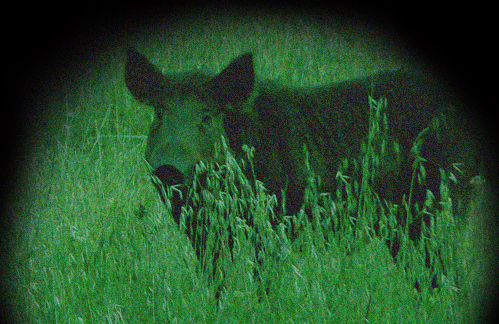Sportsmen across the country enjoy hog hunting because it can be a lot of fun as well as challenging, and the critters make good eating. But what do you know about feral hog diseases? Researchers in Texas warned Central Texas farmers, ranchers and hunters to use caution when handling wild game after finding evidence of an infection in feral hogs, one type of which is so lethal to humans it’s considered a viable bio-weapons agent!
A study out of Texas Tech University’s Institute of Environmental and Human Health warned farmers, ranchers and hunters this week to use caution when handling wild hogs after finding evidence of the bacteria that causes tularemia in feral hogs in both Bell and Coryell Counties. If you enjoy hog hunting in Texas, particularly the Central portion, pay attention. Fifteen percent of the feral hogs from the two Central Texas counties and 50 percent of those from Crosby County showed evidence of current or past infection.
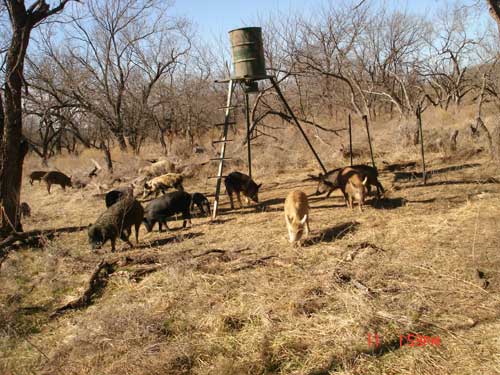
Tularemia is a serious infectious disease caused by the bacteria Francisella tularensis. The zoonotic disease researcher who lead the team that tested about 130 feral hogs from Bell, Coryell and Crosby Counties reported it is not a feral hog disease to be taken lightly. In addition to feral hogs, rodents and other game animals as well as mosquitoes, deer flies and ticks, can carry tularemia, which is commonly known as rabbit fever. Researchers reported:
“We have found high levels of antibodies in these pigs that show they have been infected with Francisella tularensis and found that some of these pigs were actively infected with it. The bacteria are constantly present in animals in this area and the feral hog population, but normally it’s only a small number of cases. This is a huge number of infected animals.”
What the hog researchers have yet to determine is the subspecies of bacteria infecting the feral hogs of Central Texas. The Type B subspecies can cause illness in wildlife, domestic animals and humans, but poses a less serious health threat to humans. On the other hand, the Type A subspecies can be lethal to humans and the U.S. Centers For Disease Control and Prevention considers Type A a viable bio-weapons agent.
“If you are handling or cleaning or eating wild game, particularly hogs, deer or rabbits, you should be wearing rubber gloves and eye protection when you’re dressing wild game. The bacteria can enter any sort of small cut or hangnail. During this time of year, it might not be as big of an issue, but you should check yourself for ticks, wear tick repellent and avoid biting flies, including mosquitoes.”
The tularemia discovery was made while the researchers were actually looking for brucellosis. However, they found no evidence of that disease in feral hogs, and were surprised to find evidence of tularemia. Traditionally, it’s a rabbit disease, but it does get reported in birds and other mammals from time to time. Because wild hogs can range over large areas, it’s certainly possible that they can transport this stuff to different areas. Caution should be taken when handling and processing game in the field and home. In addition, make sure game meats are thoroughly cooked before eating them.
Between 2000 and 2008, only eight human cases of tularemia were reported in Texas. About 125 cases are reported each year in the U.S. Feral hogs can be found in 230 of Texas’ 254 counties, making for abundant hog hunting possibilities, but cause annual damages estimated at nearly $400 million. The potential spread of feral hog diseases, combined with physical damages caused by hogs, may make these animals more disliked than ever.
